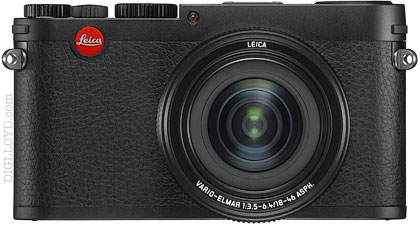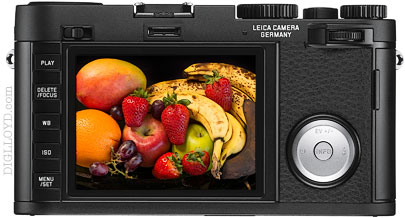How Will Leica X Vario Lens Compare to the Ricoh GR, Sony RX1, Sigma DP Merrill?
I’ll have the Leica X Vario (about $2850) coming for testing in two days, and I’ll be shooting it on my mountains trip in the 2nd half of August. I won’t have the Leica Lens Hood for X Vario Digital Camera, which is feels just plain cheap (not just the cost, but unavailability and the hassle of discovering the omission post-purchase), but Sony does the same thing with the Sony RX1.
The Peter Karbe interview on the Leica X Vario discusses optimizing the lens design. Something has to 'give' for peak performance and a slow lens speed was answer. The gaping hole that I see here was not committing to a new AF APS-C lens mount with interchangeable f/2.8 prime lenses also achieving peak performance. But probably Leica (for very good reason) would see that as undermining Leica M sales.
The Leica X vario is about 3X the weight and twice the volume of the Ricoh GR. In short, a very different camera in size and shape and design, but with a 28-70mm (equiv) slow zoom claimed to offer best-in-class imaging quality that matches the elite performance of the Leica 50mm f/2 APO-Summicron-M ASPH.
I expect the Leica X Vario to have fewer and less well executed features and usability than the Ricoh GR and to be less fun to carry and use, and I would be very happy to be proven wrong on those points. But the main question arises: is the lens really as good as claimed? In short, how does the X Vario compare to the following high performers:
- Leica X Vario f/3.5 @ 28mm vs Ricoh GR.
- Leica X Vario ~f/4.5 @ 35mm vs Sony RX1R
- Leica X Vario ~f/5.0 @ 45mm vs Sigma DP2 Merrill.
- Leica X Vario f/6.4 @ 70mm vs Sigma DP3 Merrill.
Note well that when zoomed, the X-Vario aperture wil be well stopped down for the other cameras, which should therefore also be at their optimal performance. Should be interesting.
The Leica X-System is defined by its high-performance, APS-C format, CMOS image sensor with over 16.5 megapixels (effective 16.2 MP), unusually large compared to other cameras in this class.
The Leica X Vario is the first compact camera to combine this professional sensor with a high-performance zoom lens, the Leica Vario Elmar 18-46 mm f/3.5-6.4 ASPH, which covers a range of focal lengths from 28 to 70 mm (35 mm equivalent). This combination is a world’s first and sets completely new standards for imaging quality in its class. The size and quality of the sensor result in low image noise, high dynamic range, and accurate color reproduction.
| Leica X Vario specifications | |
|---|---|
| Lens: | Leica Vario Elmar 18 - 46 mm f/3.5 - 6.4, 9 Elements in 8 groups, 2 aspherical lens elements |
| Aperture settings: | 3.5 / 6.4 to 16 (1/3-EV increments) |
| Focusing range: | 30 cm–infinity |
| AF focusing: | 1-point, 11-point, spot, face detection |
| Image sensor: | APS-C CMOS image sensor with 16.5 MP (effective 16.2 MP) |
| Resolution: | DNG in 3:2 format: 4944 × 3272 pixels (16.2 MP) JPEG in 3:2 format: 4928 × 3264 pixels (16.1 MP), 4288 × 2856 pixels (12.2 MP), 3264 × 2160 pixels (7.1 MP), 2144 × 1424 pixels (3.1 MP), 1632 × 1080 pixels (1.8 MP) |
| Image quality: | DNG + JPEG super fine, DNG + JPEG fine, JPEG super fine, JPEG fine |
| Exposure control | |
| Exposure modes: | Automatic programme (P), automatic aperture priority (A), manual setting (M) |
| Exposure compensation: | Increments: 1/3 to 3 EV increments, 3 exposures |
| Automatic exposure bracketing: | 1/3 to 3 EV increments, 3 exposures |
| Metering modes: | Smart multi-segment metering, centre-weighted metering, selective (spot) metering |
| White balance: | Auto, halogen, daylight, flash, cloudy, shade, electronic flash, 2 manual settings, manual colour temperature setting with fine tuning |
| Sensitivity: | Auto, ISO 100, ISO 200, ISO 400, ISO 800, ISO 1600, ISO 3200, ISO 6400, ISO 12500 |
| Shutter speeds: | 30 s–1/2000 s |
| Continuous shooting: | 3 fps or 5 fps, max. 7 consecutive exposures with constant shooting speed in DNG + JPEG fine quality |
| Film modes: | Standard, dynamic, natural, b/w natural, b/w high contrast |
| Flash | |
| Flash modes: | Auto, flash exposure correction, red-eye correction, fill-in flash, slow sync, studio, 1st/2nd curtain sync |
| Hot shoe: | Compatible with Leica SF 24D, Leica SF 58 flash units |
| Monitor: | 3" TFT LCD with 921,600 pixels, wide-angle field of view: 100% |
| Review modes: | 16-thumbnail display, zoom review (16× max.), image rotation, deletion protection |
| Storage media | |
| Internal memory: | None |
| Memory cards: | SD, SDHC, SDXC |
| Interfaces: | HDMI out, USB (USB 2.0 high speed) |
| Battery (rechargeable lithium-ion): | Capacity: ~ 360 exposures |
| Dimensions (L × H × D): | ~ 133 x 73 x 95 mm |
| Weight: | ~ 650/679 g (without/with battery) |
| Package includes: | Battery (Leica BP-DC8), battery charger (Leica BC-DC8), battery case, leather carrying strap, USB cable, lens cap, user manual |
| Software: | Adobe® Photoshop® Lightroom® (free download option after product registration) |































